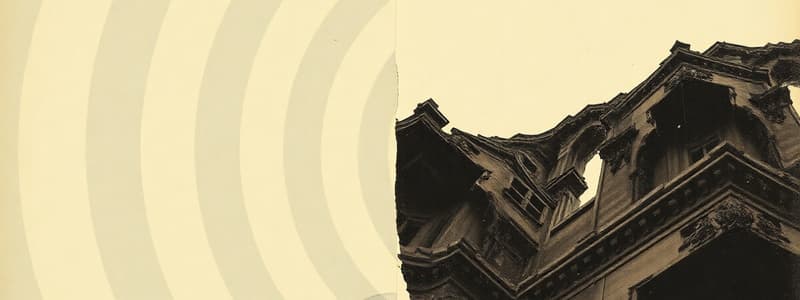Podcast
Questions and Answers
What is diffraction and how does it occur?
What is diffraction and how does it occur?
Diffraction is the bending of waves around obstacles or openings, occurring when a wave encounters an edge or slit.
Explain the difference between Fresnel and Fraunhofer diffraction.
Explain the difference between Fresnel and Fraunhofer diffraction.
Fresnel diffraction occurs when the source or screen is at a finite distance from the aperture, while Fraunhofer diffraction is observed when both are located at infinite distances.
Describe Brewster’s law and its significance in optics.
Describe Brewster’s law and its significance in optics.
Brewster's law states that at Brewster's angle, light reflected from a surface is fully polarized perpendicular to the plane of incidence.
What is Malus' law and how does it relate to polarized light?
What is Malus' law and how does it relate to polarized light?
Explain the phenomenon of double refraction and its effect on light.
Explain the phenomenon of double refraction and its effect on light.
Flashcards
Diffraction
Diffraction
The bending of waves as they pass around obstacles or through openings.
Fraunhofer Diffraction
Fraunhofer Diffraction
A type of diffraction where the source and the screen are effectively infinitely far from the diffracting object.
Single Slit Diffraction pattern
Single Slit Diffraction pattern
The pattern of light produced by a single slit, characterized by a central bright maximum and alternating dark and bright minima.
Polarization
Polarization
Signup and view all the flashcards
Birefringent material
Birefringent material
Signup and view all the flashcards
Study Notes
Diffraction
- Diffraction is the bending of waves around obstacles or openings.
- Types of diffraction include Fresnel and Fraunhofer diffraction.
- Fraunhofer diffraction at a single slit involves wave spreading after passing through a narrow slit, creating a diffraction pattern with a central bright maximum and alternating dark and bright minima.
- Diffraction at N parallel slits (plane diffraction grating) produces more intense maxima and sharper minima than a single slit, due to constructive and destructive interference from multiple slits. Sharper lines increase resolution.
Polarization
- Polarization describes the orientation of waves, particularly electromagnetic waves (like light).
- Types of polarized light include linearly polarized, circularly polarized, and elliptically polarized light.
- Linearly polarized light oscillates in a single plane.
- Brewster’s law relates the angle of incidence (Brewster's angle) to the refractive indices of two media, where reflected light is entirely polarized in a plane perpendicular to the plane of incidence.
- Malus' law describes the intensity of light transmitted through a polarizer and depends on the angle between the polarization direction and the polarizer's axis.
- Double refraction occurs when a light ray passes through a material with different refractive indices for different polarization directions, splitting the ray into two refracted rays.
- A polarimeter measures the angle of rotation of polarized light that has passed through an optically active substance.
- Applications of polarized light include stress analysis, optical filters, 3D displays and more.
Studying That Suits You
Use AI to generate personalized quizzes and flashcards to suit your learning preferences.



